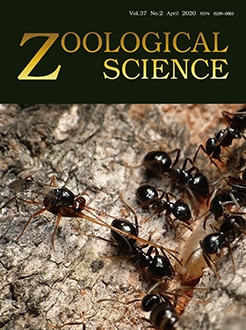In terrestrial vertebrates, the hippocampus plays a major role in spatial cognition. Recent developmental, anatomical, and histological studies suggest that the ventral region of the lateral part of the dorsal telencephalic area (Dlv) in teleost fishes is homologous to the hippocampus in terrestrial vertebrates. We hypothesized that fish species with higher spatial cognitive demands have a more highly developed Dlv compared to closely related species with relatively lower spatial cognitive demands. The fishes selected for this study were Favonigobius gymnauchen, Istigobius hoshinonis, Tridentiger trigonocephalus, and Chaenogobius annularis; all are bottom-dwelling gobiid species found in habitats that vary with respect to their spatial complexity. Volumetric analysis of the telencephalic subregions, including the Dlv, and other major brain regions showed that species from stable rocky areas had a larger Dlv than species from relatively homogenous sandy/ muddy environments. These findings support the hypothesis that the teleost Dlv is homologous to the hippocampus in terrestrial vertebrates, and that the relative development of these areas is positively correlated with spatial cognitive demand in animals.
How to translate text using browser tools
6 April 2020
Relationship between Brain Morphology and Life History in Four Bottom-Dwelling Gobiids
Masayuki Yoshida,
Tomoya Tsuji,
Takao Mukuda
ACCESS THE FULL ARTICLE

Zoological Science
Vol. 37 • No. 2
April 2020
Vol. 37 • No. 2
April 2020
brain
brain atlas
goby
hippocampus
Spatial cognition
telencephalon
teleost




